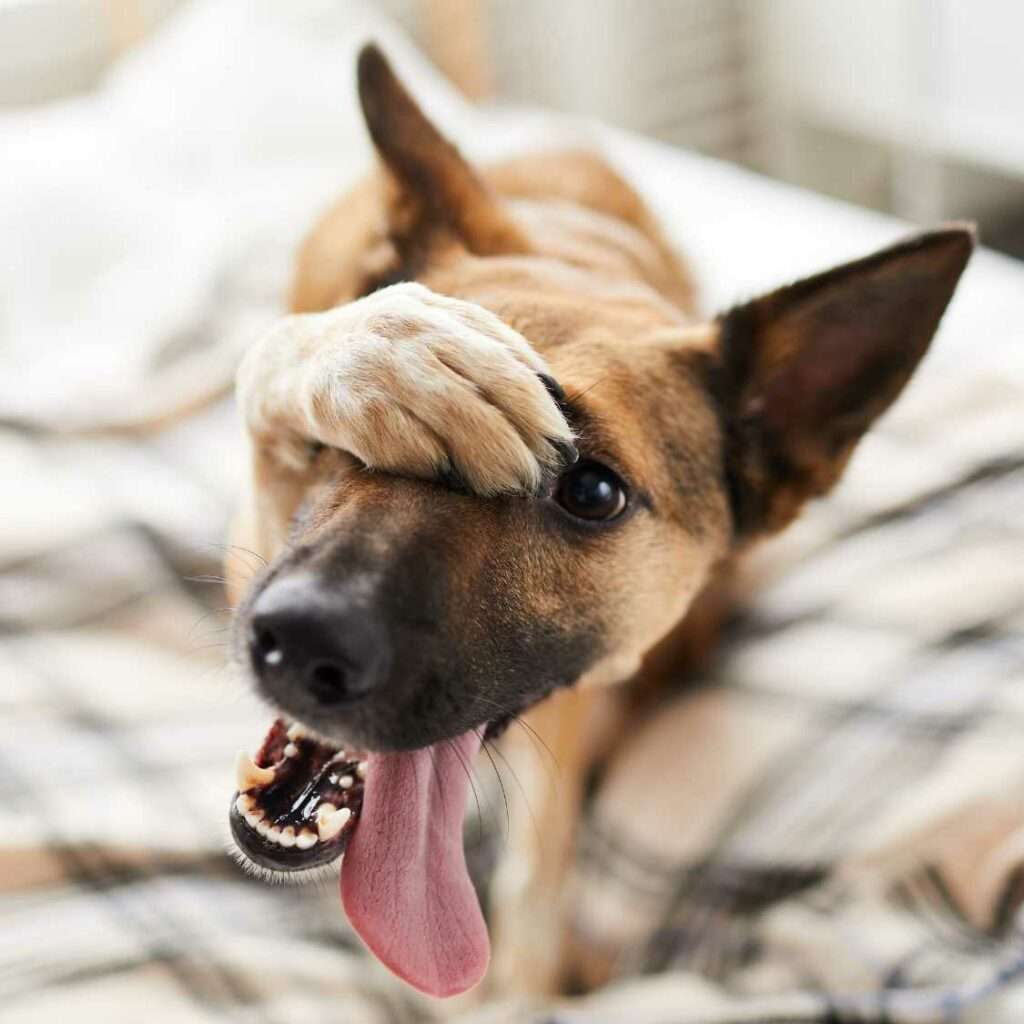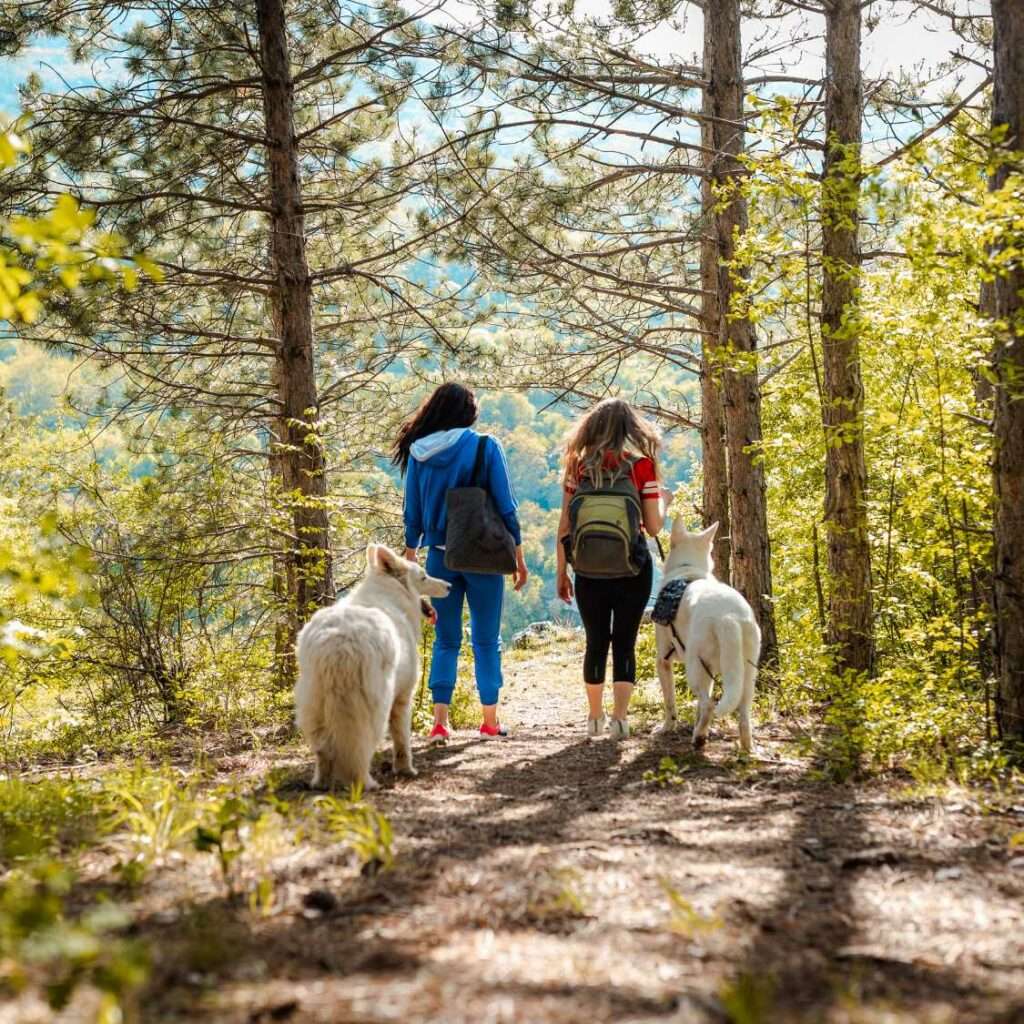The Importance of Regular Exercise for Dogs

Imagine a dog eagerly wagging its tail, bursting with excitement at the sight of a leash. This simple act signifies much more than just a walk—it’s a gateway to their happiness and health. Did you know that dogs, regardless of their breed or size, need at least 30 minutes to 2 hours of physical activity daily? This essential routine not only keeps them fit but also stimulates their minds, ensuring a balanced and fulfilling life.
In this post, we’ll explore the multifaceted importance of regular exercise for dogs, delving into the physical, mental, and behavioral benefits it offers. From maintaining a healthy weight to reducing anxiety and improving socialization skills, consistent physical activity is crucial in enhancing the overall well-being and longevity of our canine companions.
Benefits of Regular Exercise for Dogs
- Physical Health Benefits
- Mental Health Benefits
- Behavioral Benefits

Physical Health Benefits
Weight Management
Regular exercise is pivotal in maintaining a healthy weight for dogs. Just like humans, dogs can easily gain weight if they consume more calories than they burn. Obesity in dogs is linked to numerous health issues, including diabetes, heart disease, and a reduced lifespan. Engaging your dog in daily physical activities, such as walking, running, or playing fetch, helps burn excess calories, preventing weight gain and ensuring they stay fit and healthy.
Cardiovascular Health
Exercise is essential for a dog’s heart health. Regular physical activity strengthens the heart muscle, improving circulation and reducing the risk of heart disease. Active dogs have healthier blood pressure levels and better cholesterol profiles, contributing to overall cardiovascular health. Activities that get the heart pumping, like brisk walks or agility training, enhance endurance and keep the cardiovascular system functioning optimally.
Joint and Muscle Strength
Consistent exercise helps build and maintain strong muscles and joints in dogs. Activities that involve running, jumping, and climbing not only build muscle mass but also improve joint flexibility and strength. Strong muscles support the joints, reducing the likelihood of injuries and conditions such as arthritis. Especially for breeds prone to joint issues, regular, low-impact exercises like swimming can be particularly beneficial in maintaining joint health and mobility.
Digestive Health
Regular physical activity can significantly improve a dog’s digestive health. Exercise stimulates the digestive tract, helping food move through the system more efficiently and reducing the risk of constipation and other gastrointestinal issues. It also aids in the absorption of nutrients, ensuring your dog gets the most out of their diet. Additionally, active dogs are less likely to experience bloating and other digestive discomforts, leading to overall better gastrointestinal health.
Mental Health Benefits
Mental Stimulation
Exercise plays a crucial role in providing mental stimulation for dogs. Engaging in activities such as fetch, agility training, or interactive play challenges a dog’s brain, preventing boredom. A bored dog is more likely to develop behavioral issues like excessive barking, chewing, or digging. By incorporating varied and stimulating exercises into your dog’s routine, you keep their mind sharp and engaged, which contributes to better overall behavior and a happier disposition.
Reduction in Anxiety and Stress
Physical activity is a natural and effective way to reduce anxiety and stress in dogs. Regular exercise helps release pent-up energy and tension, leading to a calmer and more relaxed pet. Activities like running, playing, and exploring new environments can be particularly beneficial for dogs with anxiety, as these activities provide a healthy outlet for their nervous energy. Exercise also triggers the release of endorphins, the body’s natural stress relievers, which can significantly improve a dog’s mood and reduce anxiety levels.
Improved Sleep
Dogs who get regular exercise tend to sleep better and have more consistent sleep patterns. Physical activity helps tire out a dog, ensuring they are ready to rest when bedtime comes. Adequate exercise during the day promotes deeper and more restful sleep at night, which is essential for a dog’s overall health and well-being. Dogs that sleep well are less likely to be irritable or hyperactive, leading to a more balanced and pleasant demeanor.
Behavioral Benefits
Reduction in Destructive Behavior
A well-exercised dog is significantly less likely to engage in destructive behaviors such as chewing, digging, or excessive barking. These behaviors often stem from boredom and excess energy. Regular exercise provides an outlet for this energy, reducing the likelihood that your dog will turn to destructive activities to entertain themselves. By keeping your dog physically active, you can prevent the frustration and restlessness that lead to such behaviors, resulting in a more content and well-behaved pet.
Improved Socialization
Regular walks and playtime offer excellent opportunities for your dog to socialize with other dogs and people. Socialization is crucial for developing a well-adjusted and friendly dog. When dogs are exposed to different environments, people, and other animals, they learn to interact positively and confidently. These experiences help reduce fear and aggression, fostering a more friendly and adaptable dog. Whether it’s a trip to the dog park or a walk around the neighborhood, these activities can enhance your dog’s social skills and improve their overall behavior.
Better Obedience
Exercise can improve a dog’s ability to follow commands and behave well. Physical activity often involves structured play and training, which reinforces obedience and discipline. For instance, games like fetch or agility training require dogs to listen and respond to commands, helping them learn to focus and follow instructions. Additionally, a well-exercised dog is more likely to be calm and attentive, making it easier to train and manage their behavior. Consistent exercise routines not only keep dogs physically fit but also enhance their responsiveness and willingness to obey.
Types of Exercise
- Daily Walks
- Playtime
- Specialized Activities

Daily Walks
Daily walks are the cornerstone of a dog’s exercise routine. They provide numerous benefits, including physical exercise, mental stimulation, and an opportunity for socialization. Regular walks help maintain a healthy weight, promote cardiovascular health, and strengthen muscles and joints. Additionally, walks allow dogs to explore their environment, which stimulates their senses and keeps their minds active. They also offer a chance for dogs to meet other dogs and people, enhancing their social skills. Consistent walking routines establish a predictable schedule, which can reduce anxiety and improve overall behavior.
Playtime
Playtime is essential for a dog’s physical and mental well-being. Engaging in activities like fetch, tug-of-war, and playing with other dogs offers varied and enjoyable ways for dogs to expend energy and stay fit. Fetch is excellent for high-energy dogs, providing a rigorous workout that also stimulates their chasing instincts. Tug-of-war is not only a fun game but also helps strengthen muscles and provides mental engagement as dogs strategize to win. Playtime with other dogs encourages social interaction, teaching them how to communicate and behave in a pack, which is crucial for their social development.
Specialized Activities
- Agility Training: This involves obstacle courses where dogs must navigate tunnels, jumps, and weave poles. It enhances their coordination, agility, and obedience while providing a rigorous physical workout. Agility training also builds confidence and strengthens the bond between dog and owner as they work together to master the course.
- Hiking: Hiking offers a unique way to exercise dogs in a natural setting. It provides an excellent cardiovascular workout and engages their senses with new sights, smells, and sounds. Hiking is especially beneficial for dogs that enjoy exploring and have a lot of energy to burn. Always ensure the trail is dog-friendly and bring plenty of water for both you and your pet.
- Swimming: Swimming is a low-impact exercise that is particularly beneficial for dogs with joint issues or those recovering from injuries. It provides a full-body workout, improving cardiovascular health and muscle strength without putting stress on the joints. Swimming is also a fun way for dogs to cool off in hot weather.
- Dog Sports: Participating in dog sports like flyball, frisbee, or dock diving can be a thrilling way to keep your dog active. These sports combine physical exercise with mental challenges, requiring dogs to follow commands and perform specific tasks. Dog sports also offer a social aspect, allowing dogs to interact with other dogs and owners, enhancing their social skills and behavior.
Customizing Your Dog’s Exercise Routine

Age Considerations
- Puppies: Puppies are full of energy and curiosity, but their exercise needs and limitations differ from those of adult dogs. Their bones and joints are still developing, so it’s important to avoid high-impact activities that could cause injury. Short, frequent play sessions and gentle walks are ideal. Activities that encourage exploration and socialization, like supervised playdates with other puppies, are also beneficial for their development.
- Adult Dogs: Adult dogs generally require more vigorous exercise to maintain their physical and mental health. The specific amount and type of exercise will depend on the breed and individual dog’s energy level. Most adult dogs benefit from at least 30 minutes to 2 hours of exercise daily, which can include a mix of walks, playtime, and specialized activities like agility or hiking.
- Senior Dogs: Senior dogs often have reduced energy levels and may suffer from age-related health issues like arthritis. Exercise is still important to maintain their mobility and overall health, but it should be gentler and less strenuous. Shorter, more frequent walks, gentle play, and low-impact activities like swimming are ideal. It’s important to monitor them closely and adjust their routine based on their comfort and abilities.
Breed-Specific Needs
- High-Energy Breeds: Breeds like Border Collies, Australian Shepherds, and Labrador Retrievers have high energy levels and require substantial physical and mental exercise. Activities such as running, agility training, and interactive play are ideal for keeping these breeds engaged and well-exercised.
- Low-Energy Breeds: Breeds such as Bulldogs, Basset Hounds, and Shih Tzus tend to have lower energy levels and require less intense exercise. Gentle walks, light play sessions, and moderate activities are usually sufficient. It’s important to avoid over-exertion, especially in breeds prone to respiratory issues.
- Working Breeds: Dogs like German Shepherds, Rottweilers, and Siberian Huskies have a strong work ethic and thrive on structured activities that challenge them both physically and mentally. Incorporating training exercises, advanced obedience, and specialized sports can be particularly beneficial for these breeds.
Health Conditions
- Joint Issues: Dogs with joint issues such as arthritis or hip dysplasia require low-impact exercises to avoid exacerbating their condition. Swimming is an excellent option, as it provides a full-body workout without stressing the joints. Short, frequent walks on soft surfaces can also help maintain mobility without causing pain.
- Cardiovascular Conditions: Dogs with heart conditions need carefully monitored exercise routines. Short, gentle walks are generally safe, but it’s crucial to avoid activities that could cause excessive strain. Always consult with a veterinarian to create a safe and effective exercise plan for dogs with cardiovascular issues.
- Obesity: Overweight dogs require a gradual increase in physical activity to avoid putting too much strain on their bodies. Start with short, low-intensity walks and gradually increase the duration and intensity as they lose weight and build stamina. Dietary management should also accompany their exercise routine to achieve the best results.
Safety Tips for Exercising Your Dog

Avoiding Overexertion
- Know Your Dog’s Limits: Understand your dog’s breed, age, and fitness level. High-energy breeds can handle more exercise, while older or smaller dogs may tire quickly.
- Gradual Increase: Start with short, less intense exercise sessions and gradually increase the duration and intensity.
- Monitor Behavior: Watch for signs of exhaustion, such as excessive panting, drooling, or lagging behind. If your dog seems tired, take a break or stop the exercise.
- Weather Awareness: Avoid strenuous exercise during peak heat in the summer or extreme cold in the winter. Early mornings or late evenings are better for exercise in hot weather.
- Short Sessions: On particularly hot or cold days, limit the length of exercise sessions to prevent overheating or hypothermia.
Hydration
- Access to Water: Always bring water with you on walks or exercise sessions. Portable dog water bottles or collapsible bowls are convenient options.
- Frequent Breaks: Offer water to your dog frequently, especially after exercise or during hot weather.
- Check for Dehydration: Signs of dehydration include dry gums, excessive panting, lethargy, and loss of skin elasticity. If you suspect dehydration, provide water immediately and consult a vet if symptoms persist.
- Post-Exercise Hydration: Ensure your dog has access to fresh water after exercise to help them rehydrate and cool down.
Paw Care
- Check the Ground: Before heading out, check the pavement or terrain for heat or roughness. If it’s too hot for your hand, it’s too hot for your dog’s paws.
- Paw Protection: Consider using dog booties to protect paws from hot pavement, ice, snow, or rough terrain.
- Moisturize Paws: Use a pet-safe paw balm to keep your dog’s paw pads moisturized and prevent cracking.
- Inspect Regularly: After walks or outdoor activities, check your dog’s paws for cuts, abrasions, or foreign objects like thorns or glass.
Regular Vet Checks
- Routine Checkups: Schedule regular vet visits to ensure your dog is in good health and fit for exercise. Vets can identify potential health issues that might limit your dog’s ability to exercise safely.
- Health Monitoring: Discuss your dog’s exercise routine with your vet, especially if your dog has any pre-existing conditions. The vet can provide tailored advice based on your dog’s health status.
- Vaccinations and Preventatives: Keep your dog up-to-date on vaccinations and parasite preventatives, which are essential for dogs that spend a lot of time outdoors.
- Weight Management: Regular vet checks help monitor your dog’s weight, ensuring they are neither underweight nor overweight, both of which can impact their ability to exercise safely.
Conclusion
Ensuring your dog gets regular exercise isn’t just about keeping them physically fit—it’s about promoting their overall health and happiness. By incorporating a variety of activities tailored to your dog’s age, breed, and health condition, you can provide them with the mental and physical stimulation they need to thrive.
From daily walks to specialized sports, each type of exercise offers unique benefits that contribute to your dog’s well-being. But it’s not just about the activities themselves—it’s also about ensuring their safety and comfort every step of the way.
By following safety tips like avoiding overexertion, keeping them hydrated, protecting their paws, and scheduling regular vet checks, you can minimize the risks associated with physical activity and maximize the rewards.
Remember, exercise isn’t just a chore—it’s an opportunity for bonding, enrichment, and adventure. So lace up those walking shoes, grab your dog’s favorite toy, and get ready to embark on a journey of health and happiness together. Your dog will thank you for it with wagging tails, bright eyes, and boundless energy.






